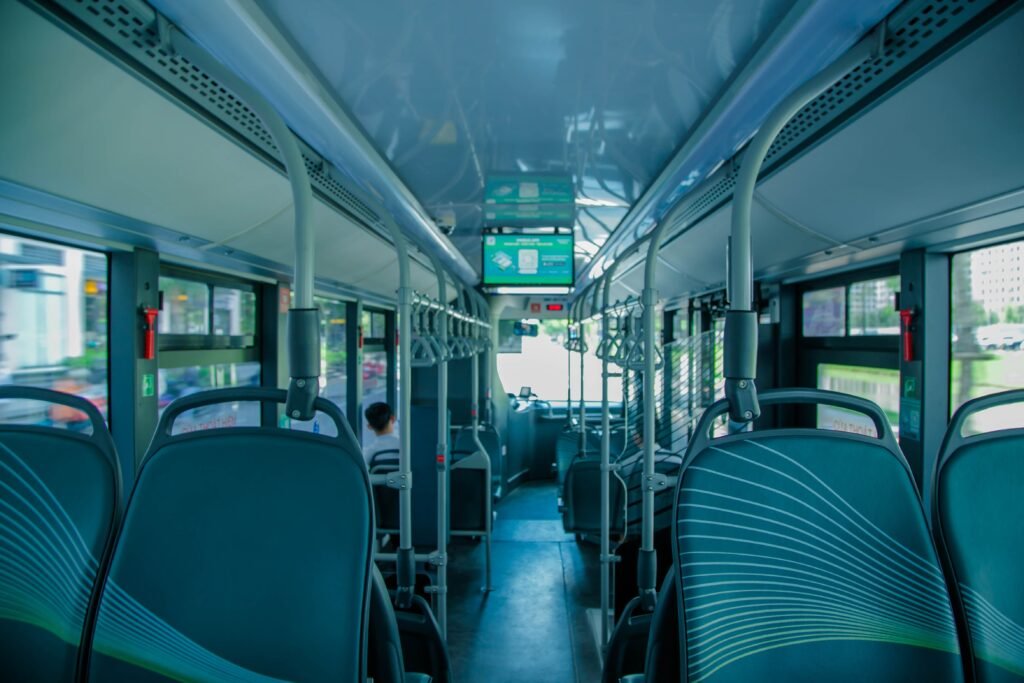In today’s rapidly evolving technological landscape, the impact of artificial intelligence (AI) on public safety cannot be understated. AI has revolutionized the way we approach and address various safety concerns, from crime prevention to emergency response. By harnessing advanced algorithms and machine learning, AI enables faster and more accurate data analysis, proactive threat detection, and efficient resource allocation. This article explores the profound impact of AI on public safety, highlighting the ways it enhances our collective well-being and ensures a safer and more secure environment for all.

This image is property of images.pexels.com.
Enhanced Surveillance
In recent years, the field of surveillance has been revolutionized by the integration of artificial intelligence (AI) technologies. One of the areas where this impact is most visibly seen is in closed-circuit television (CCTV) systems. By combining CCTV with AI, law enforcement agencies are able to greatly enhance their surveillance capabilities. AI-powered CCTV systems have the ability to analyze video footage in real-time, automatically detect and track objects of interest, and send alerts when suspicious activities are detected.
Another aspect of enhanced surveillance is Automated License Plate Recognition (ALPR). This technology uses AI algorithms to quickly and accurately read and analyze license plate numbers from captured images or video streams. By automating this process, law enforcement agencies can perform efficient and effective vehicle checks, aiding in investigations, and improving traffic safety.
Facial recognition is yet another powerful tool in the realm of enhanced surveillance. With facial recognition technology, law enforcement agencies can identify individuals in real-time by matching their facial features against a database of known individuals. This not only helps in the identification of criminals but can also play a vital role in locating missing persons or providing real-time monitoring at high-security events.
Predictive Policing
AI-driven predictive policing is transforming the way law enforcement agencies identify crime patterns and predict potential hotspots. By utilizing advanced algorithms and analyzing historical crime data, law enforcement can identify patterns and trends that may go unnoticed by human analysts. Crime Hotspot Identification allows the allocation of resources for proactive policing in areas where incidents are more likely to occur, effectively deterring and preventing criminal activities.
Crime Pattern Analysis takes this concept further by analyzing data on crime types, locations, and times to identify patterns that can be used to forecast future criminal activity. This information helps law enforcement agencies allocate resources strategically, deploy personnel to high-risk areas, and take proactive measures instead of relying solely on reactive responses.
Emergency Response
AI is playing a crucial role in improving emergency response operations. In fire and rescue operations, AI-powered systems can analyze data from various sensors and cameras to provide real-time information to emergency personnel. This information includes identifying fire hotspots, tracking the spread of flames, and helping firefighters make informed decisions. AI algorithms can also assist in improving medical emergency management by analyzing patient symptoms, assisting in diagnosis, and suggesting appropriate treatments to healthcare providers.
When it comes to natural disasters, AI can help with disaster preparedness by analyzing historical data, weather patterns, and geographical information to predict the occurrence and impact of such events. This allows for early warning systems to be implemented, evacuation plans to be developed, and emergency resources to be allocated more effectively.
Cybersecurity
The increasing digitization of our world brings both convenience and risks. AI is proving to be a valuable asset in the field of cybersecurity, helping organizations detect and prevent threats in real-time. AI-powered threat detection systems can analyze large volumes of data from various sources such as network traffic, logs, and user behavior to identify patterns indicative of malicious activities.
Vulnerability assessment is another area where AI is making a significant impact. AI algorithms can automatically identify vulnerabilities in software or network systems, allowing organizations to patch or mitigate these vulnerabilities before they can be exploited by cybercriminals.

This image is property of images.pexels.com.
Transportation Safety
The advent of autonomous vehicles has the potential to drastically improve transportation safety. With AI technology, these vehicles can analyze and interpret data from various sensors to make real-time decisions, such as accelerating, braking, or changing lanes to avoid potential collisions. The ability to continuously monitor the surrounding environment and make split-second decisions can greatly reduce the risk of accidents caused by human error.
AI-powered traffic management systems, on the other hand, can analyze traffic patterns, road conditions, and real-time data from vehicles to optimize traffic flow, reduce congestion, and improve overall transportation efficiency and safety.
Border Security
In an era of increasing globalization and cross-border threats, AI plays a crucial role in ensuring effective border security. Automated Border Control systems leverage AI technologies to streamline and automate immigration processes. These systems use facial recognition and biometric verification to accurately identify individuals, ensuring secure and efficient border crossings.
Biometric verification, in particular, has become an invaluable tool in border security. By analyzing unique physical or behavioral characteristics such as fingerprints, iris patterns, or gait recognition, AI-powered systems can accurately verify the identity of individuals, preventing the use of fraudulent documents and enhancing the overall security of border control.

This image is property of images.pexels.com.
Identity Verification
AI-powered identity verification systems are revolutionizing the way organizations secure their premises and verify the identity of individuals. Automated surveillance and screening solutions leverage AI algorithms to analyze video streams and detect anomalies or suspicious activities in real-time. These systems can alert security personnel when unauthorized individuals are detected or when predefined rules or behaviors are violated.
Behavioral analysis algorithms can also be employed to analyze patterns and identify potentially suspicious behavior. By learning and recognizing typical human behaviors, AI systems can detect deviations and raise alarms when a person’s behavior indicates a potential threat.
Crime Prevention and Investigation
The integration of AI in crime prevention and investigation is transforming the way law enforcement agencies operate. By leveraging AI-powered data analysis and pattern recognition, law enforcement can identify hidden or complex patterns in vast amounts of data that human analysts may miss. This helps in predicting and preventing crimes, as well as aiding in investigations by identifying potential suspects or connections between seemingly unrelated incidents.
Detection of suspects is another critical application of AI in the field of crime prevention and investigation. Using AI algorithms, law enforcement agencies can analyze various data sources, such as surveillance footage, witness descriptions, or suspect databases, to identify potential matches and narrow down the pool of suspects, significantly accelerating the investigative process.

Public Health and Safety
AI technologies have the potential to revolutionize public health and safety by enabling proactive measures and efficient resource allocation. Outbreak prediction and monitoring is a prime example of how AI can make a significant impact. By analyzing data from various sources, such as social media, healthcare records, or meteorological information, AI algorithms can identify trends and indicators of potential disease outbreaks, allowing public health organizations to take preventive measures and allocate resources more effectively.
In times of emergencies, such as natural disasters or pandemics, AI can assist in emergency resource allocation. By analyzing data on available resources, population distribution, and infrastructure, AI systems can help determine where and how resources should be allocated, ensuring that critical supplies and services reach the areas most in need.
Prisoner and Facility Monitoring
AI-powered systems are improving the monitoring and security of prisons and other correctional facilities. Activity monitoring AI algorithms analyze video feeds or sensor data to detect abnormal or prohibited activities, such as violence, escape attempts, or contraband exchanges. This allows for immediate response and intervention, enhancing overall safety and security within these facilities.
Contraband detection is another crucial aspect of prisoner and facility monitoring. By leveraging AI technologies, law enforcement agencies and correctional facilities can enhance their ability to detect and prevent the introduction of prohibited items or substances. AI algorithms can analyze X-ray scans or other imaging data to identify potential contraband items that may be hidden within belongings or body cavities.
As AI continues to evolve and improve, its impact on public safety will only increase. From enhanced surveillance to predictive policing, emergency response, and cybersecurity, AI is playing a critical role in shaping a safer and more secure future for individuals and communities worldwide.
